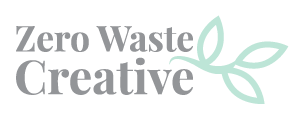What is flexitarian diet and why might be the best fit for you
Over the years I have tried to test out a lot of different diets and routines to see which fit best with my lifestyle. When I adopted a zero waste lifestyle two years ago, I realized I needed to consider the greater impact of my food choices.
Not only did I want to prioritize my mental and physical health by eating well, but I also needed to adjust my habits to reduce the amount of waste I was producing in my kitchen. The easiest way to do this in my mind, was to make adjustments to my eating habits for the better instead of trying to find low waste swaps for plastic filled junk.
I'm not saying I ate badly by any means, but there were definitely areas I could see improvement. I started to read more about the impact of waste on our planet, and on myself. I learned how damaging animal agricultural practices are in both ethical and environmental senses, and how the best thing I could do for the planet was to go vegan.
Problem solved right? Not quite.
Veganism isn’t for everyone
If you are a long time meat eater, I am sure you can agree that moving away from it can be tough if it's all you are use to. Especially if you are a woman who has additional nutritional requirements to consider; things like getting enough iron for anemia, or being recommended to eat more protein throughout your pregnancy.
A few months ago I tried going vegan for a month and found it a great diet for eating healthy and integrating more fruits and vegetables into my diet. My waste consumption was minimized and I was able to compost a lot more. However, I did find it difficult to consume enough iron and protein to fit my nutritional needs. I also had my husband, Mark to consider in all of this.
Household eating looks different for everyone, and many 100% plant based individuals might disagree with my findings, but I can only speak from my own experience. Similar to zero waste, which is all about reducing your impact rather than eliminating it entirely — flexitarianism allows you to reduce in the ways you can.
Let me explain a bit more about it to see if this might be a good fit for you too!
*Please note: I am not a dietitian and recommend you ask your doctor for advice before making any major dietary changes like this — I am sharing for entertainment purposes only.
What is a flexitarian diet?
A flexitarian diet is simply put, flexible vegetarian eating. It is focused on adding nutrient dense plants to your diet without eliminating meat entirely. The term was coined by dietitian Dawn Jackson Blatner in her book "The Flexitarian Diet: The Mostly Vegetarian Way to Lose Weight, Be Healthier, Prevent Disease and Add Years to Your Life." It’s less about reducing or restricting, and more about adding more fruits and veggies to your diet.
Depending on your source of information, you can find many interpretations of what this means. Which I guess is the entire point of the ‘flexibility’. Some flexitarian diets rely 90-95% on fruits, vegetables, and legumes with the occasional chicken breast or steak; while others continue to have meat focused meals a few times a week.
What are the benefits of a flexitarian diet?
There are endless benefits to incorporating more fruits and vegetables into your diet. The flexitarian diet specifically was designed by a dietitian to promote more plant based meals for the benefit of:
Lowering your chance of heart disease, diabetes, and cancers
Losing weight to achieve or maintain a healthy body
Improving mental health and clarity
Decreasing a person’s carbon footprint
Relying on more package free, plant foods
How do you start a flexitarian diet?
There are three basic stages to getting started with this diet. It takes a bit of planning and internal rewiring to make changes much like anything, but the stages make the transition a bit easier on your system if you are a heavy meat eater. These steps were taken from the Cleveland Clinic website.
Step One: Start by reducing your overall meat consumption to 28 ounces or less of meat per week
Step Two: Focus on eating fully vegetarian 3-4 days a week and consume 18 ounces of meat or less per week
Step Three: Settle into following a vegetarian diet 5 times a week and consume 9 total ounces or less each week
How difficult is a flexitarian diet to maintain?
I believe the flexitarian diet is fairly easy to maintain because there is room to adjust in whatever capacity you need. The recommended guideline is to reduce your meat product consumption to somewhere between 9 - 28 ounces, however, it’s all about progress, not perfection.
I have found the flexitarian diet an amazing introduction to a more plant-focused diet, without feeling restricted. I believe this diet is a lot more attainable of a goal for individuals who are wanting to transition from a carnivorous diet to one with more plants. Whether it be for their health, the planet, or in the best case — both.
Share with me in the comments: What sort of diet do you choose to maintain and why? I’d love to learn more about those in my community and what motivates them to lead healthier lives.
